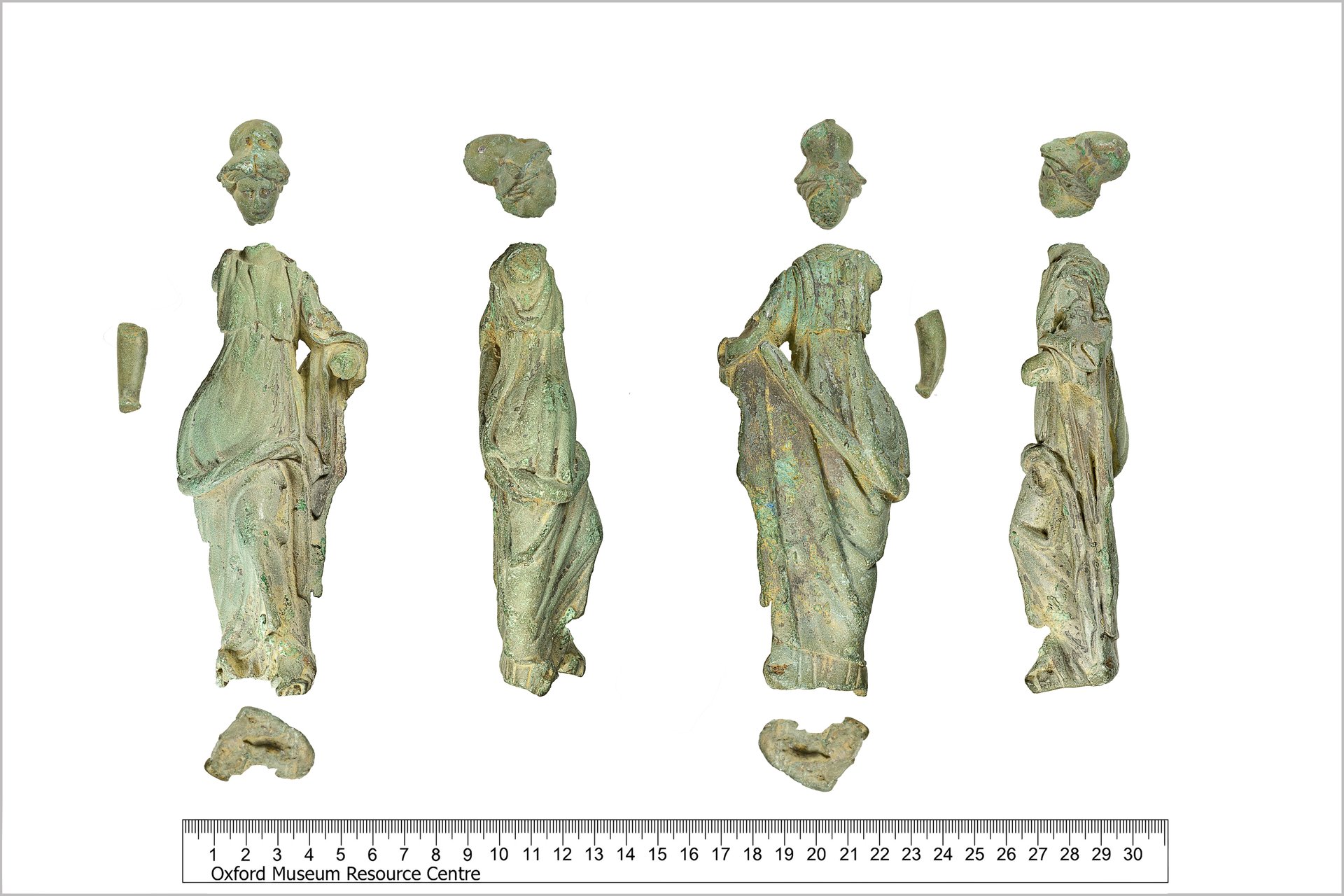A British farmer with a metal detector found a 2,000-year-old Roman statuette, then forgot about it
About 2,000 years ago, in a Roman shrine not far from what is now Oxfordshire, England, an 18-inch copper-alloy and lead statuette of the Roman goddess of wisdom surveyed the scene with silver eyes. The shrine no longer exists—the figure of Minerva, on the other hand, spent hundreds of years buried in a nearby field.


About 2,000 years ago, in a Roman shrine not far from what is now Oxfordshire, England, an 18-inch copper-alloy and lead statuette of the Roman goddess of wisdom surveyed the scene with silver eyes. The shrine no longer exists—the figure of Minerva, on the other hand, spent hundreds of years buried in a nearby field.
When she was found 10 years ago by a landowner with a metal detector, she had a still more ignominious destination: the inside of a margarine tub. (To add insult to injury, her head had detached from her body during this time.)
The landowner, whose name has not been released, thought almost nothing of the find. Maybe it was a modern copy, a curiosity, possibly even quite charming.
But it wasn’t until Len Jackman, a retired lorry driver, asked him if he could fossick for treasures himself that the landowner remembered the statue in the tub. “I thought it looked important and old,” Jackman told the Guardian, eventually taking it to the local finds liaison officer. “I said ‘I think you’ll be getting a phone call’.”
It’s now being lauded by the British Museum as a treasure, and potentially an “amazing object for a museum collection, if that’s what happens to it,” according to Michael Lewis, the museum’s head of portable antiquities and treasure.
This statue is one of some 1,267 finds made recently by British hobbyists armed with metal detectors, ranging from silver watches to bronze age gold bulla. The 1996 Treasure Act legally obliges people who have found “treasure” to report their find within 14 days.
Sound vague? It’s actually quite specific: Treasure, legally speaking, is any coin at least 300 years old made of at least 10% gold or silver; any group of two or more metal objects from prehistory, and any mostly gold or silver object that’s been “deliberately hidden with the intention of recovery.” If it is determined to be treasure, and a museum decides they’d like it, the finder is then obliged to sell it at a price set by independent antiquities experts. If they don’t want it, the finder can keep the booty themselves.
Minerva’s next stop isn’t certain—she’s yet to be acquired by a museum, if at all. Whether or not it befits a goddess, it’s all but certain to be a step up from being stuck in the mud, let alone a margarine container.